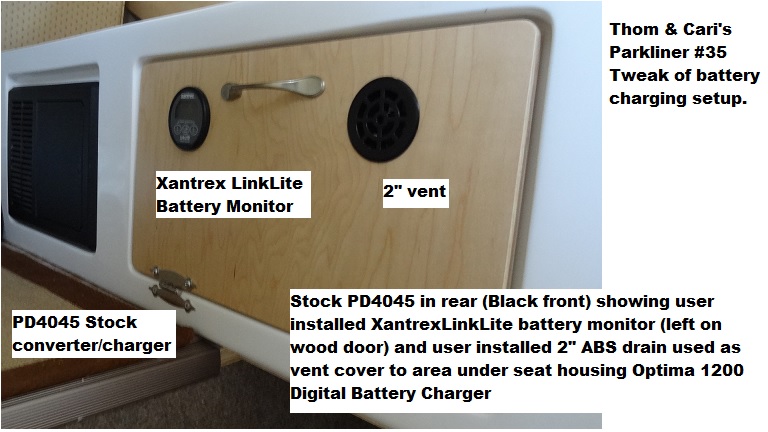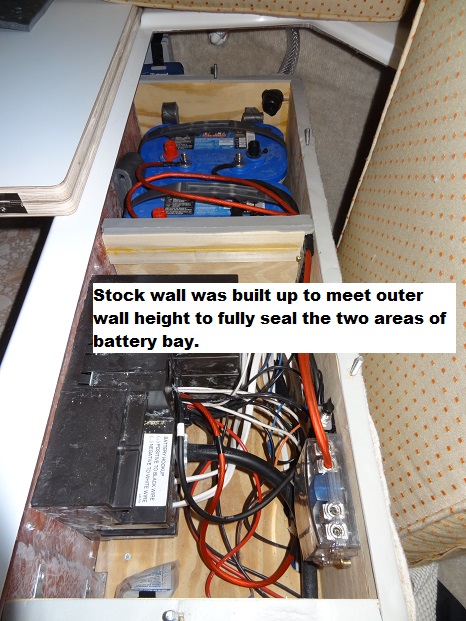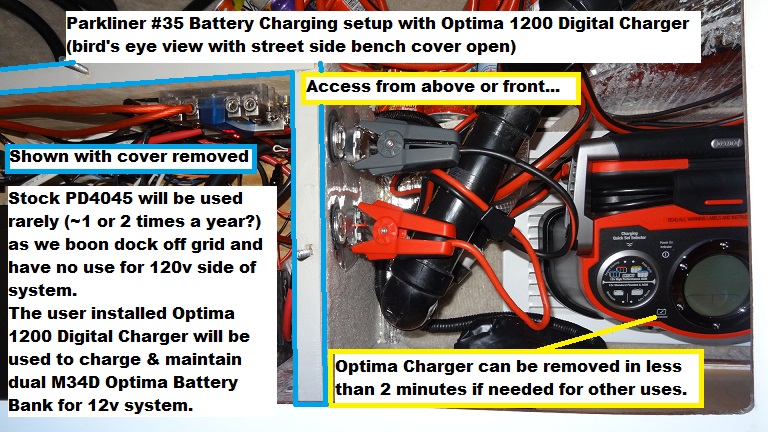You will have approximately 200 watts of solar with three pvl-68. You will get about 12 to 13 amps in full summer high noon sun, depending on latitude and temperature and wiring.
These panels do pretty good in lower light or cloudy conditions, better than framed panels, but they take up a lot more room to make the same wattage in direct sun.
4 t 105's is a lot of capacity for that relatively little amount of solar. If you were to use 50% of that capacity, it would take more than 3 days in good sun, without any more loads placed on those batteries during those 3 days, for them to near 100% via solar alone.
Now any solar is better than no solar, but it is better( for battery longevity and performance) to have enough solar to meet a MINIMUM 5% of overall battery capacity. 5-13% is a figure someone else figured out a while back.
5% of 464 amp hours( 4 t105's) is 23.2 amps. Or somewhere between 300 and 350 watts of solar. Another good general rule which will see you through the cloudy days better is 100 watts per 100 Amp hours of storage capacity, so 200 watts for 464 amp hours of battery, is not doing those batteries any favors.
I deliberately lowered my overall capacity by 100 A/h as I wanted to come closer to the battery manufacturer recommended minimum charge rate. Also I never really needed all the capacity I was carrying. In fact it was extremely rare for me to go below 65%, and that took a few days of being electrically greedy and lots of bad weather.
I am cycling a single group 31 battery rated at 130 Amp hours with 198 watts of solar @32N.
I've been using a Bluesky2512i charge controller since 2007. I also have the IPN pro remote battery monitor so I can see what is coming from and going back into the batteries via several different charging sources.The IPN pro remote also allows one to change voltage setpoints, which can be vital for T 105's and they require 14.8 volt acceptance/absorption voltages to fully charge. I change my setpoints every 10 to 14 days to go upto near 16 volts on my group 31 battery, to get the specific gravity back up in the green(1.280). If I do not do this, after 3 weeks the voltage really falls fast under discharge, even after a blinking green light from the solar controller every day for several hours, and the Specific Gravity, despite the green blinking light, is down in the red at 1.225
Do not trust that a blinking green light means the batteries are really topped off. Only a Hydrometer can tell you that.
It is important to be able to bring the batteries back upto 100% regularly. If you just cycle them in the 50 to 80% range or less for weeks on end, they will sulfate badly and lose capacity quickly, and at that point, even doing an equalization( intentional overcharge) will likely return only a small portion of that lost capacity.
So if solar is to be your primary charging source, you need more solar or less battery, and you can't fit more than 3 pvl 68's on a Van roof, another option would splitting the 4 t015's into two banks and recharging one at a time.
If you really require 4 t-105's you will also need other charging sources. The alternator is a great bulk (back upto 80% state of charge) charger, if wired properly and driven long enough, but very poor at taking it them 100%.
Getting that last 20% into batteries takes hours and hours no matter what charging source is used. Do not believe any claims about fully recharging battery or battery bank, in less than 6 hours.
Solar is great for that last 20% but it needs to be enough solar that it can hold 14.8 volts for a few to several hours daily, and the more battery capacity, the more wattage required to hold them up in that range. One is basically shooting to have the batteries up above 80% by 11 am so there is enough sun and light left that the solar can hold 14.8 for the manufacturer recommended, or Hydrometer dictated time required to return Specific gravity to the maximum baseline.
Also if one is loading the batteries during recharge, then even less solar amps are making it to the batteries.
A plug in charger will be needed too for whenever you have access to 120Vac. Iota DLS 55 would be a good mate for 4 t 105's. It will do 14.8v which is important for t 105's.
I like my Blue Sky, but I hear good things about morningstar, and Rogue controllers too.
If I had to do it again, today I'd probably go with a single ~240+ watt framed panel, and a MPPT charge controller ( Rogue)which can handle 24v+ nominal panels. My controller is for 12v nominal panels only. I currently have a 130 watt framed Kyocera and a pvl 68 in parallel.
I wish I had bought the BS 2512i(x) model instead, which has a battery temperature sensor on it, which can be important if charging during temperature extremes.
Keeping the wires short as possible pretty much dictates drilling a hole in the roof. Google "cord grips". Dont stress the leak part if you do it right with the right product. Also keeps those wires from flapping around in the slipstream. Keep the charge controller close to the batteries over short fat cabling, but not in the same compartment.
Depending on the charge controller you get, you can run those 3 pvl 68 in series for higher voltages. Higher voltages translate into lower voltage drop across the wiring to charge controller, and thinner wiring can be used. There are higher penalties if a single panel is partially shaded though.
I am not aware of any solar specific combiner/junction boxes for RV's. I think some just use outdoor household boxes with watertight cordgrips for inlet and outlets.
Your MPPT charge controller's ability will kind of dictate whether you go with the panels in series or parallel, and this will directly relate to how or if a junction box on the roof is needed, and how clean of an install you can manage, and by clean I mean a short as possible circuit path through minimal connections over quality cabling/wiring for minimal voltage drop and best recharge performance.
4 t-105's will need to be vented. They will offgas a lot in the higher states of charging. You don't want to breathe/smell those fumes undiluted( closed van), nor do you want those fumes to accumulate somewhere where a spark can ignite them. Also the fumes are corrosive so no delicate electronics in the immediate area of the batteries either.
AGM batteries ($$$) are safer, if the battery bank is to be in the living quarters, and proper venting seems to be too much of an issue. The Iota's 14.8v might be a bit too high for AGM batteries.
Also one should not get 4 batteries and then add another 2 later on. Much better if all batteries in parallel, or series parallel are same size make and age.
Also can't stress enough the importance of proper wire/ cable terminations. Either crimping or soldering properly requires the right tools and the skills to use them properly. At best a bad connections will just heat up and waste power, at worst your van goes all Fukushima on you.
For inter battery connects and for cabling between alternator and batteries, I recommend having custom cables made up for those without the tools and skills.
Here is one place to have them made:
http://www.genuinedealz.com/custom-cables
So you can see it is not just a matter of getting batteries and adding a charging source, or 3. Batteries are not cheap so It is in one's best interest to recharge as close as possible to the manufacturer recommended rates, and really try to get them to a true 100% Monthly, if not weekly.
And never believe the blinking green light, until you verify it with a Hydrometer.












































































